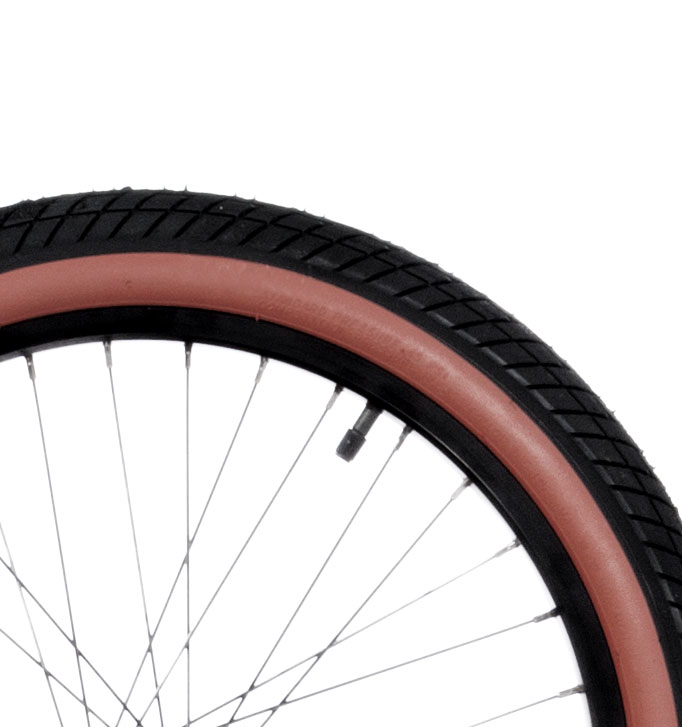| Afraid to take off your rear wheel to fix a flat tire (or when taking off both wheels to put a bike in a car trunk)? Worried that you'll mess up the chain or shifting; or that you'll get all greasy? Think you'll never get the rear wheel back on right? We have good news: Anyone can remove and install a rear wheel and it won't affect the shifting or the chain. And if you work carefully, you won't have to touch that greasy drivetrain either. Here's how it's done on any bicycle with derailleurs, from road bikes, to mountain bikes and any 2-wheelers in between. Watch the videos and review the step-by-step photos and text. We're also happy to demonstrate in person, too, so please let us know if you'd like a quick lesson. We've covered all the tips and tricks, so you'll be an expert in no time! |
WHEEL REMOVAL 1, 2, 3!
1. Shift onto the small cog and small chainring.
Shifting the chain down onto the smallest cog on the rear wheel and the smallest chainring on the crankset, creates slack in the chain, which makes rear wheel removal much easier. It also makes wheel installation easier because it gives you an accurate way to line up the wheel (on the smallest cog) so that it slips right into the bicycle frame.
If you're riding and feel the rear tire becoming soft slowly from a puncture, you may have time to make the shifts to the smallest cog and ring as you're slowing to a stop.
If you're not riding, or have already stopped, operate the right shift lever, lift the bike by the seat and pedal by hand and the chain will move down the cogs in the back. Depending on the type of shift lever, you may need to move the lever a couple of times to move the chain onto the smallest cog.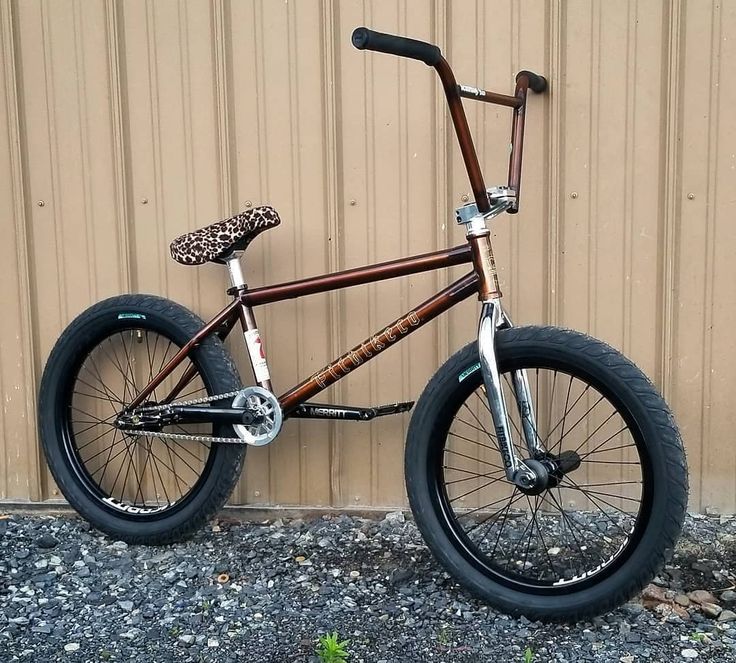
Now, do the same with the left shift lever and pedal by hand and get the chain onto the smallest chainring in front, too.
2. Open the brake
Note: If you're fixing a flat tire, you needn't worry about this step because when the air is all out of the tire it will fit through the brake easily. Also, if your bike has disc brakes, you too can skip this step because you don't need to touch disc brakes to remove wheels.
On most bikes with rim brakes, when you try to remove the wheel, the tire bumps into the brake pads. This is because the brake needs to be adjusted close to the rim, while the fully inflated tire is significantly wider than the rim.
To prevent the tire bumping into the brake pads, you can open sidepull brakes by fully rotating the little lever on the brake upwards (photo a). This little lever is called the brake quick release for the way it lets you quickly release (open) the brake pads. For linear-pulls (also called "direct-pulls," and "V-brakes") lift/pull the end of the "noodle" out of its holder (
photo b).
Some sidepulls are opened by pressing a button on the lever. Look for this if there's no lever on the brake.
Open cantilever brakes (these feature a cable that runs over the top of the tire) by lifting the cable end on one side out of its holder.
Workarounds: If you can't find a way to open a brake, you can also let air out of the tire until you can pinch it enough to squeeze it through the brake pads. Another trick - though it requires tools and time - is to remove one brake pad which will often provide sufficient clearance. If not, you can remove both pads. Just be sure to remount them carefully so that they contact the rim squarely and don't touch any part of the tire.
3. Pull the derailleur back and remove the wheel
Now you're ready to remove the wheel. Most bicycle wheels have quick releases holding them in the frame (the red parts in the photo). To open the quick release and loosen the wheel, simply pull and fully open the lever, which is usually on the opposite side of the chain. Don't twist the lever. Just pull it out/away from the frame.
Don't twist the lever. Just pull it out/away from the frame.
When the quick release is open, the wheel is ready to come out. To remove it, lift the bike by the seat so that gravity will help you. On some bikes the wheel will drop right out at this point (don't let it roll down the road and escape!). Or, if it doesn't fall out on its own, give it a slight blow with your hand and that might knock it right out.
Don't force anything though. If the wheel doesn't come out right away, it's because the derailleur and chain are blocking it. To get them out of the way, keep holding the rear end of your bike off the ground by lifting the bike by the seat. Reach down with your free hand and pull back the derailleur with your hand to get it, and the chain, out of the way.
Now, the wheel should fall out or drop out if you shake the bike. If the chain gets in the way still, just grip the wheel and shake it so that it's free of the chain and fully off the bike (that way you never touch the chain and stay clean). Good job!
Good job!
Note: To clearly show the desired derailleur position, we locked it in place. You must pull it back by hand when removing wheels because it won't stay in place on its own.
How to put the rear wheel back on
| As you guessed, installing the rear wheel is the same as removal only in the reverse order! You just place the wheel back in the frame being careful to get the chain on the right cog, close the quick release to lock the wheel in, and close the brake so your brakes are working again. The video shows front and rear wheel installation in that order. We go over the step-by-step below and explain some of the things that can go wrong and how to deal with them. It can be frustrating if the wheel won't go in easily. But there's always a mechanical reason. So, look at what you're doing carefully and read our instructions a few times and you should be able to find the problem and address it so that the rear wheels goes right back where it belongs. |
If your wheel won't go in easily, check these things:
Did you get the chain on the cog right? Remember that you shifted the chain onto the smallest rear cog before you removed the wheel. So, you must put the wheel back on by first lining that smallest cog up just right so that the chain is on it. Also, pay attention to how the chain rests on the cog. The chain is a closed loop. The cog should be inside the loop (see the photo in Step 3).
Note: If the wheel has been off the bicycle for some time, it's possible that someone might operate the shift levers. This can move the derailleur so that when you line up the wheel with the smallest cog the wheel won't go into the frame. Instead it bumps into the frame. To remedy this and get the wheel in, simply operate the shift lever as if you're shifting onto the smallest cog. This will move the rear derailleur back where it needs to be so that the wheel will line up right with the frame and go in.
This will move the rear derailleur back where it needs to be so that the wheel will line up right with the frame and go in.
Did the chain come off the derailleur pulley? Another glitch that can prevent the wheel going right into the frame is if the chain happens to come off the top pulley on the derailleur (photo). This is hard to see but it has a similar effect to someone shifting the derailleur into the wrong position and it makes the wheel run into the frame and not want to go in. To fix it, just push the chain back onto the pulley and make sure it stays there as you install the wheel. Tip: Use a stick to push it on or wrap your finger in a rag and you'll stay grease-free.
Is your quick release still open? Sometimes when the wheel is separate from the bike, the quick release lever gets bumped and flipped over and closed. When this happens the wheel won't fit in the frame anymore because the quick release is closed and in the way.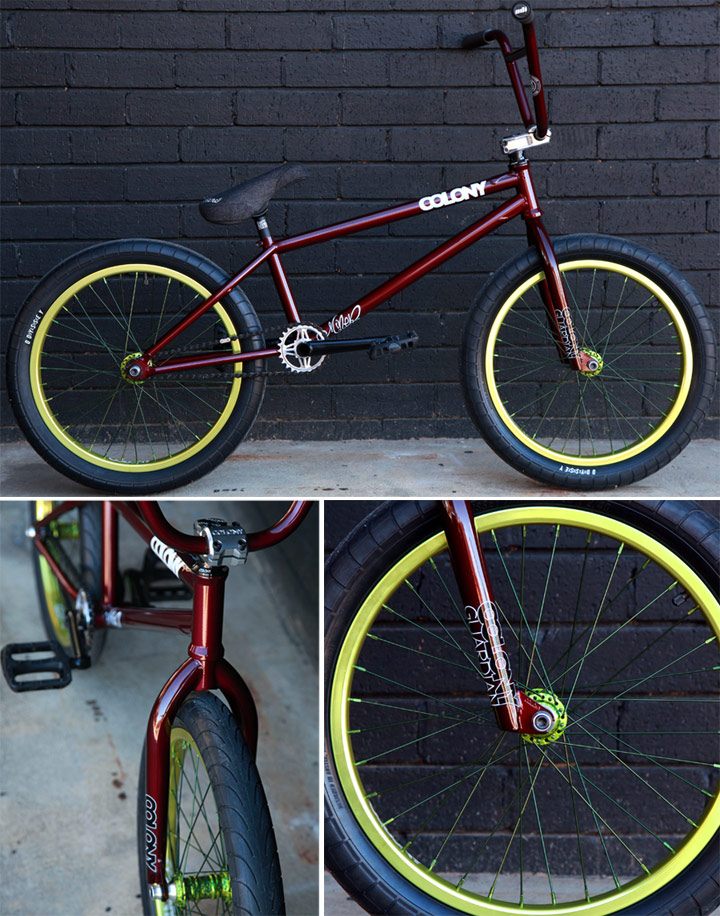 Open it and the wheel will fit.
Open it and the wheel will fit.
Now that you know how it's done, you may want to practice removing and installing your rear wheel a few times to become expert at it so that when you have to do it, it's a breeze. And, so you can dazzle your friends by helping them remove/install their wheels! Have fun and let us know if you'd like a demo.
Biketoworkday is supported by its audience. When you buy through our links, we may earn an affiliate commission. Learn more
Written by Gary Johnson / Fact checked by Henry Speciale
Removing your rear bike wheel is a normal feat for most bikers. However, there are incidents where you need to fix a flat tire, pack it inside your car, or do a regular maintenance check. With a quick-release mechanism, it has become a hassle-free task without any tools required.
With a quick-release mechanism, it has become a hassle-free task without any tools required.
But what if your bike does not come with a quick-release system? Well, here are some ways to learn how to remove rear bike wheel with no quick release. It can be done by properly preparing your bike, disengaging brakes and derailleur gear, and loosening the nuts. Then you can gently remove the bike wheel off the frame. To know better and more clearly how to do those steps, just continue to read our guide.
Table of Contents
First, let’s get to know what a quick-release system is and how it works on a bike.
A quick-release system is a convenient and most effective mechanism to remove a wheel from the bike frame. It utilizes a cam mechanism that allows bike wheels to be removed quickly without requiring any tool. In addition, it is simple to operate and will never give you a hard time removing your wheel.
In addition, it is simple to operate and will never give you a hard time removing your wheel.
It has a hub axle with a shaft, a lever that serves as a cam system, and an adjusting nut. The cam mechanism helps to put tension on the shaft and pull the cam and adjust nuts against the dropouts. With this system, you just need to pull the lever to an open position and loosen the nut on the next side. And yes, you can now remove your bike wheel that instant.
But without a quick-release, will removing your bike be more challenging?
Well, removing a rear bike wheel with no quick-release is not next to impossible. It is still feasible to remove a wheel without having to rely on quick-release. You just need to follow these five easy-to-follow steps:
The first but the most important part of achieving an effortless removal of the rear bike wheel with no quick release is preparation.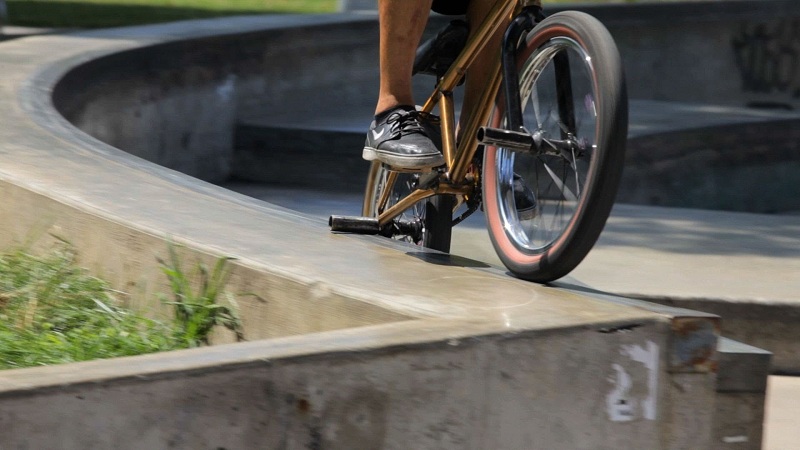 If you have a bike repair stand, you need to put the bike steady on that for convenience when working on the bike. However, if you don’t have a stand, you can lay down your bike.
If you have a bike repair stand, you need to put the bike steady on that for convenience when working on the bike. However, if you don’t have a stand, you can lay down your bike.
The position of your bike is required not only to give you convenience but a good angle when removing your rear bike wheel. So, I think it’s better to use a bike repair stand when doing this job.
Second, inspect whether your bike has cantilever brakes (rim brakes) or disc brakes. If your bike has rim brakes, all you need to do is open the breaks. For disc brakes, you need to take extra care so that your bike will not topple over. With this kind of brake, the rear wheel will come out, but it will have the tendency to bend as disc brakes tend to hold your bike wheel more rigidly than rim brakes.
Next, work on the derailleur gear. Most bikes have derailleur gear that you need to disengage when removing a wheel. For this process, you need to select the smallest combination of the ‘sprockets’ and move the pedals while waiting for the chain to drop on the ground. Once the chain dropped, it revealed the nuts holding your rear bike wheel.
Once the chain dropped, it revealed the nuts holding your rear bike wheel.
This step is important as it will give you a better view of the nuts you need to unscrew. Without loosening the nuts, your rear wheel will keep its hold on the bike frame or body.
Once the nuts are entirely accessible to you, it is now time to loosen them. Your bike wheel usually comes with 15mm nuts on both ends. You need to loosen these nuts to release your wheel from the bike frame.
In this step, you will need a tool to release the nuts. Take note that the tool you need should fit exactly 15mm nuts. Look for a wrench or a spanner that can surround a 15mm nut.
Once you secure a compatible spanner, observe the position of the washers before turning the nuts to their desired degree. Check whether the nut is moving, and slightly move it to a direction where it will be unscrewed. Afterwhich, you can now unscrew the opposing nut, as well.
After the nut is wholly loosened and released, you can now stand behind the bike with your head on its center-line. It will give you a better angle of the wheel before removing it. In this step, the wheel is not entirely removed from the bike.
You need to gradually release the bike frame from the wheel by grabbing the left side of the bike while your right thumb is securing the end of the nut on the other side. Your left hand should give you stability while you are pulling the derailleur body completely from the wheel.
Once the derailleur rotates out from under the rear wheel, you can now lift the body of your bike while the wheel stays on the ground. In this step, you will notice that the wheel is already detached from the bike’s frame, yet the chain is not completely removed. You need to completely unhook the chain with your right hand and lift the bike body with your left.
After lifting, the rear wheel is now fully removed from the bike. Hang your bike after, and inspect the rear wheel that you removed. At this point, you already removed the rear wheel from your bike.
ConclusionNow that you went through the step-by-step process of removing your rear bike wheel without quick release, I hope you find that it is not as challenging as it seems. With this guide, we believe it clearly explains the steps and gives you confidence in doing the job. Furthermore, if you are confused about how much it cost to true a bike wheel, please check out this article for more detailed cost.
Henry Speciale
“Bike commuting should be the trend for the next few years, and it is a convenient and eco-friendly way for us to travel. And we are here to make it a bit less troublesome for people who want to maintain their vehicle for a long time. So, the content I expect to put out here is offering help for bikers who are facing issues with parts of their bikes once in a while. Let’s have fun and protect the environment together!”
And we are here to make it a bit less troublesome for people who want to maintain their vehicle for a long time. So, the content I expect to put out here is offering help for bikers who are facing issues with parts of their bikes once in a while. Let’s have fun and protect the environment together!”
Name and scope of work performed
Cost, rub. The service also includes the first free maintenance within a month after assembly.
Crankset replacement with pedal reset
600
Replacement of the rear switch (with adjustment)
700
Replacement of stars (including removal/installation of the connecting rod)
Replacing the carriage/cartridge (including removal/installation of connecting rods)
replacement of pedals
300
Front derailleur replacement (incl. chain removal and installation)
chain removal and installation)
800
Rear derailleur roller replacement
300
Shift cable jacket replacement
400
replacement of rattles / cassettes
400
end / lubrication of shirts without saving the cable
400 9000 side (includes gearshift adjustment, but does not include brake adjustment)
800
Adjustable shifter replacement (1 side)
700
Split bottom bracket overhaul (only if replacement is not possible)
from 1200
Adjustment of the front/rear switch
450
Repair/replacement of the chain with length adjustment
400
Lubrication of the shirt of the switch cable without removal
9000 with removal and washing600
Transmission cleaning (includes surface cleaning of stars and washing of the chain with dismantling)
1100
Transmission washing with complete dismantling (includes dismantling of all transmission components)
2000
Washing transmission with full dismantling and switching to paraffin lubricant (includes dismantling all components of the transmission)
2500
Removal of a collapsible carriage of
400 9000 bicycle)
800
Cleaning and lubricating the shifter (includes blowing the shifter with high pressure air and lubricating without disassembling the shifter body)
500
Hydraulic brake replacement incl. Safeing the hydrolyania, pumping, adjustment (one side)
1400
Replacing or shortening the hydrolyania with pumping (1 side)
1000
Replacing the potassium disc brake with an adjustment of
800 9000 adjustable (one side)
600
Replacing front/rear rim brake
700
Replacement of the brake cable shirt
400
Brake disk replacement (rotor)
300
Brake Rules replacement (1 side. Dismantling and installation of flu and configuration)
9000Replacing hydraulic potassium/ handles (1 side, including removal and installation of grips, adjustment and bleeding)
1100
Brake cable replacement (without adjustment)
300
Correction of brake disc curvature (excluding the cost of adjustment)
from 300
Mechanical cleaning of the brake disk with a dismantling
600
pumping of the hydraulic brake (including trading liquid) (1 side)
800
Adjustment of the front/rear rim brake
9000 400Adjustment/posterior adjustment disc brake
300
Cable sheath lubrication (without removal)
200
Trim disc brake mounts
500
Brake disc (rotor) cleaning (without removal)
300
Replacement of a potassium of a hydraulic disk brake with adjustment and pumping
1100
Perenoption of a potassium discharge brake
Perenoption of a potassium/handle of a hydraulic disk brake
90009000 "eight") (NOT including tire fitting)
from 600
Rear hub drum overhaul on balls (includes additional hub overhaul)
2000
Boil of the rear wheel sleeve with a grease without a drum, taking into account the removal/installation of rattles/cassettes
1000
Boil of the front wheel with a lubricant
600
Breeding the rear sleeve (if there are hills)
from 1000
Bulkhead of a single-speed road hub with foot brake
1000
Bulkhead of the front hub on industrial bearings (if bearings are present)
600
Re-spoke (rim/hub/spoke change) without spokes (NOT incl. tire fitting, cassette/ratchet/brake disc removal/installation)
tire fitting, cassette/ratchet/brake disc removal/installation)
1600
Re-spoke (rim/hub/spoke change) with retain
1800
Rim and hub selection
300
Front hub cone adjustment
rear hub adjustment3 ratchet/cassette installation)
600
Tire service (tube / tire change): on the rear wheel of a bicycle with foot brake / with planetary hub / with additional wheels
600
Tire service (tube / tire change): wheel with nuts (replacement tube/tire): eccentric wheel
400
0004
700
Converting to a tubeless tire (not including materials)
1000
Wheel assembly using a strain gauge (category 1). Includes the assembly of the wheel from individual components. It is performed using a strain gauge (a device for determining the tension on the spokes around the entire perimeter of the rim). Includes free needle pulling for 2 weeks after assembly.
2000
Wheel assembly using a strain gauge and nipple clamp (category 2). Includes assembly of the wheel from individual components, as well as broaching performed within a month after the assembly of the wheel. Nipple washers and/or nipple threadlocker may be used during assembly. It is performed using a strain gauge (a device for determining the tension on the spokes around the entire perimeter of the rim). Includes free needle pulling for 2 weeks after assembly.
Includes assembly of the wheel from individual components, as well as broaching performed within a month after the assembly of the wheel. Nipple washers and/or nipple threadlocker may be used during assembly. It is performed using a strain gauge (a device for determining the tension on the spokes around the entire perimeter of the rim). Includes free needle pulling for 2 weeks after assembly.
2300
External cleaning/lubrication of the shock -absorption fork
200
Sprinkling of the thread on the threaded rod of the fork
300 per 1 cm. Threads
Replacement of the cycle fork (vkl. Removal
1500
Replacing the steering column with pressing out the cups
1000
Threading 1, 1 1/8 on the threadless fork stem
400 per 1 cm. Threads
Breeding a steering column with a lubricant of
700
Selection and replacement of the rear switch "Petukha"
500
Adjustment of the pressure in the air spring of the front/rear shock absorber
9000Regulation/adjustment/adjustment/adjustment/adjustment/adjustment repair of the folding mechanism
from 200
Repair (editing) of the cock rear derailleur bracket *No warranty
400
Installing the anchor in the fork stem
300
Elimination of the steering column play
300
Roll replacement (VCL installation/dismantling of manners, brake handles are paid separately)
9000 9000 500Grip change (pair) without saving
200
Grip change (pair) with save
400
Seat change
300
Front shock absorber zero maintenance
1500
that front shock absorber I - category (spring ammoretors)
1500
The front shock absorber II - category (shock absorbers with air spring) (Dpry maintenance is not included)
9000Complete the front shock -absorption with an air spring
from 2500
Restoration (running) of the bottom bracket thread on the frame without body kit
600
Restoring (driving) the thread with a pedal tap in an aluminum crank
400
Restoring (running) the thread with a tap for a pedal in a steel crank (if the crank cannot be replaced)
600
Restoring the thread in the crank by installing a 900 repair sleeve 9003 900
Manufacture of a "rooster"
from 2000 (from 5 working days)
Locksmith work (standard hour)
1200
Complicated replacement of the carriage with the need to restore the thread of the bottom bracket shell
dated 2000
shortening of the seatpost
400
Corruption of the steering wheel
600
shortening the rod of the plug
400
Replacement of the frame (dismantling, tuning equipment with regulatory)
4500
Complete overhaul of the bike with detailed washing, lubrication and adjustment of all serviceable components (except for the shock absorber overhaul)
6000
Packing the bike in a box or bag for transportation (includes packing material, as well as detailed advice when transporting the bike) except for threaded connections inside the fork, shock, telescopic seatposts, shifters - in accordance with the recommendations of the manufacturer)
1000
Complete bicycle wrap (excluding material cost)
2500
Partial bicycle wrap (excluding material cost) wheels, complete cleaning and lubrication of the transmission with the dismantling of individual components (rear derailleur, cassette, system), if necessary, as well as the removal of traces of adhesive tape, bitumen, stickers and other stubborn stains.
5000
installation of trunk
of 600
installation of wings (uncomplicated) (includes the installation of a set of wings (drilling, cutting threads, etc.) of the wing itself or frame)
500
Installation of wings (complicated) (includes installation of a set of wings with modification (drilling, threading, etc.) of the wing or frame itself.)
from 500
Installation of the holder of the flask
200
Installation of the children's chair
from 700
Installation of additional wheels
of 400
Installation of the rear switch
100
installation of protection on the front star
of 200
9000100
Installing the mirror (without removing the grip)
200
Installing and programming the bike computer
from 700
Installation of the basket
dated 400
installation of the footboard
200-500
Installation of horns
Installation of lighting equipment (pcs. )
)
dated 100
Delivery of a bicycle from the client to the workshop and back
from 1000
Departure of a mechanic (within St. Petersburg and Leningrad Region)
from 1000
Delivery of a bicycle from the client to the workshop or back
from 500
Removing the front/rear wheel is easy. Even if you are doing it for the first time. The wheel is removed to replace the tube, tire or spoke. Transportation in public transport or seasonal storage - for these reasons, dismantling is also resorted to.
You can always remove or install a wheel, carry out maintenance on your bike or solve any technical problem in our professional workshop.
The front wheel is easy to remove, but the rear wheel is a little trickier. After all, there is a chain, and a lot of sprockets, and a switch. But you definitely don't have to worry! In a new article, we will talk about this procedure in detail.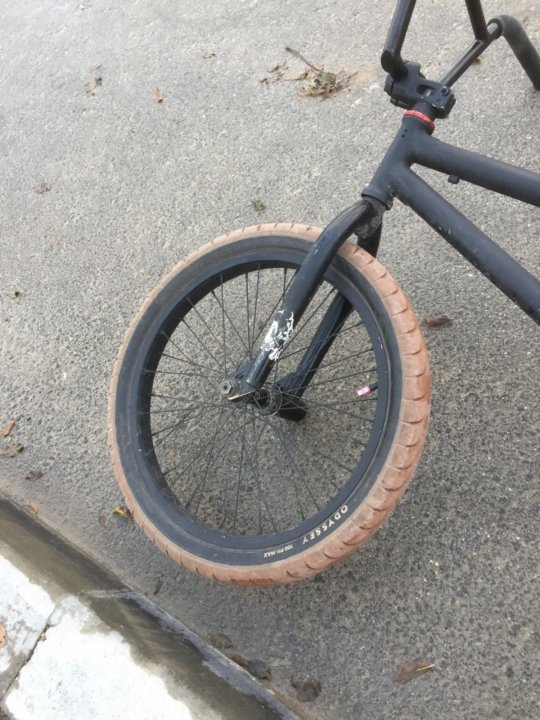 There is nothing supernatural in this.
There is nothing supernatural in this.
1. Depress the rim brakes.
2. Move the brake levers (one by one).
3. Slightly lift the cable holder up.
There are two ways to fix the wheel: with two nuts or with an eccentric (more often). In the case of nuts, you will need two wrenches. Use the first key on one side, holding it in one position. Turn the second one to the left (counterclockwise). It is not necessary to completely unscrew the nuts - you just need to loosen them enough. If the wheels are mounted on an eccentric, then the task is simplified: there is no need even for tools. Just pull the eccentric lever towards you, then, supporting the axle on the other side, make a couple of turns with it to the left - until the wheel is released.
When removing two wheels, it is advisable to remove both brakes. Otherwise, you will have to turn the bike over twice. If the tires have a large tread pattern or they are just very large, then deflate the air first.
It is also a good idea to loosen the chain as much as possible. To do this, put the chain on the smallest sprockets front and rear. Then you need to turn the bike upside down. Then simply open the eccentric / unscrew the wheel nuts.
Please note that in this position (wheels up) the bike will be very stable and accessible for service. However, there is a certain nuance: if hydraulics are installed on the bike, then it is advisable not to keep it in this state for too long. Air can get into the hydraulic lines, which, in turn, will lead to a difficult and time-consuming process of bleeding the brake system.
How to remove the wheel (disc brakes)
If you have disc brakes, we recommend inserting a special plug between the brake pads (sometimes it comes with the bike). A piece of plastic or a ruler will do. This will prevent the pads from compressing if you accidentally press the brake lever. Then it is not so easy to unclench them back, and if this fails, you will not return the wheel back.